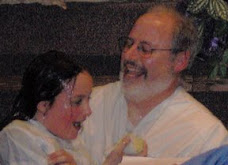 |
| Boring Announcements |
This
blog article reflects deeply on Welcome and Announcements as an important and
integral part of Christian worship in the local church.
The
Problem
The Welcome
and Announcement portion of a worship service is typically viewed as obtrusive
and boring. We cannot, however, dispense with it because we otherwise view it
as being important for various reasons. Here, I attempt to rescue Welcome and
Announcements from its present state of deprecation to make it meaningful,
lively, exhortational, and spiritual, and not merely functional.
The
Welcome and Announcements should flow very quickly, very naturally, without belaboring
every point. They should be at least a little sermonic, a little exhortational,
with occasional humor to help with the flow and keep the congregation focused. In
my world, five minutes is enough to make the five elements of Welcome and
Announcements effective.
What
I Try to Accomplish
I
include five elements in the Welcome and Announcements segment. I list them
here, explaining what each element is meant to accomplish.
1.
First Words.
Example: “Praise the name of Jesus who leads us in joyful procession to the
throne of grace” or “It is in the name of the resurrected Son of God that I
welcome you to worship,” etc.
a.
First Words should tap into a joyful exuberance that is altogether
expected for those who worship the living Christ.
b.
Note that First Words is a uniquely Christian greeting. A mundane “good morning” is not adequate for
the grand purpose of Christian worship.
c.
We worship Jesus as Lord to the glory
of God the Father (Phil 2:11). Thus, First Words should reflect a Christocentric
theology—it’s all about Christ.
d.
Finally, First Words should help
create a comfortable and expectant
atmosphere.
2.
Welcome of Visitors
a.
The worship leader should
express a warm welcome specifically toward
visitors.
b.
As a pastor, I fervently seek to
connect with visitors, and this requires some contact information. Since some
visitors are reluctant to provide contact information, the welcoming of
visitors should include an appeal to give
us their personal information.
c.
The Welcome should contain an affirmation of the visitors’ decision to join us, including a prayer wish that God would especially
bless them (e.g., “May God pour out his blessing on you today so that you
experience his grace in a profound way.”)
3.
Who We Are
a.
Ostensibly, the Who We Are
segment introduces ourselves to visitors, and involves reference to some select core values of the church.
b.
The ultimate purpose of the Who
We Are segment is to promote spiritual
formation of the congregation by projecting our ideal identity.
c.
The Who We Are segment consists
of about four points that reinforce our ideal identity.
i.
Two of the points recall the previous week’s sermonic
emphasis
ii.
Two of the points anticipate the current worship’s sermonic
emphasis
d.
Example: Here, the previous
worship service emphasized lament and grief due to sin, while the present worship serviced emphasized lamenting and grieving
in silence
We are the people of God
o Who recognize that we are profoundly
affected by sin
o Who have cried out to God for deliverance
o Who have put our hope in God who is our
refuge and strength
o Who patiently wait in silence so that we may hear God
speak to us in our time of trouble
e.
These four or so points attempt
a continuity in our worship life
from week to week, although most won’t perceive it
4.
Announcements: Announcements are
characteristically promotional. They should be delivered with some
enthusiasm and emphasis.
a.
Announcements are meant to promote communications in congregational life.
b.
They draw attention to special events, encouraging
congregational participation.
c.
They share special ministerial urgencies with the congregation, with the hope
that the congregation will own these urgencies.
d.
They constantly should inculcate
a sensitivity to ministerial call.
e.
Ultimately, announcements should
encourage ministerial engagement.
5.
Welcoming Prayer
a.
This short prayer (about 30
seconds) reinforces that that announcements
are proclamation and exhortation, and not merely an events list
b.
The prayer should emphasize call to ministry for every congregant
c.
Finally, the Welcoming Prayer should
impress one or two current ministerial
urgencies of the church on the minds of the congregation.




2 comments:
I skimmed the article. Not bad :-)
How do you begin your worship service? What happens before the Welcome and Announcements that allows your congregation to focus on this time?
Post a Comment